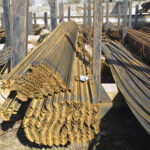Introduction to Tin Plates
Tin plates originate from a refined process in which low-carbon steel is coated with a protective layer of tin. This metallurgical bond enhances performance by boosting corrosion resistance, preserving product integrity, and enabling top-tier printability or lacquering. Widely recognized for their shiny, reflective surfaces, tin plates bring an added level of craftsmanship and safety to end products.
Notable Characteristics
- High Corrosion Resistance
The tin coating fends off moisture and chemical reactions, extending the shelf life of packaged goods and reducing rust formation in various environments. - Food-Grade Safety
Often used in direct food contact applications, thanks to its reliability in sealing out contaminants and maintaining edibility. - Superior Surface Quality
Offers a smooth base for printing, painting, or decorative finishes that catch the eye on store shelves. - Excellent Formability
Maintains structural integrity during bending, stamping, and roll-forming processes, making it invaluable in container and metal fabrication.
Applications of Tin Plates
- Food & Beverage Packaging
- Cans, Tins & Containers: Extend product freshness in canned fruits, vegetables, or ready-to-eat meals.
- Biscuit & Confectionery Boxes: Provide attractive, premium packaging that preserves taste and aroma.
- Chemical & Pharmaceutical
- Aerosol Cans: Create robust cans for deodorants, household cleaners, and topical sprays.
- Medical Equipment Storage: Safeguards essential items against contamination and corrosion.
- Consumer Goods & Retail
- Gift Tins & Promotional Containers: Showcase products in decorative tins for special events or seasonal promotions.
- Stationery & Craft Items: Ideal for pencil boxes, decorative cases, and artistic metal crafts.
- Industrial & Electronics
- Battery Components: Conductive properties aid in battery terminals and casings.
- Shielding & Housing: Essential for EMI protection and durable packaging of electronic parts.
Why Opt for Zaeki Tin Plates?
- Premium Sourcing Standards
We partner with production facilities adhering to international benchmarks, guaranteeing consistent tin-coating thickness, optimal adhesion, and flawless surfaces. - Comprehensive Quality Checks
Each shipment goes through strict testing—including chemical composition assessments, coating integrity verification, and dimensional accuracy reviews. - Range of Coatings & Thicknesses
Whether you seek lightly coated plates for decorative tins or heavier coatings for demanding food storage, we tailor solutions that meet your product’s specific needs. - Global Logistics Network
Our integrated supply chain capabilities facilitate timely shipping, competitive rates, and stress-free customs processes, ensuring you receive tin plates right when you need them. - Dedicated Client Support
From suggesting suitable tin coating weights to helping with final packaging requirements, Zaeki’s specialists offer strategic guidance for every stage of your order.
Packaging & Delivery
- Secure Palletization: Stacked and strapped to maintain plate integrity during long-distance transit.
- Protective Wrapping: Employing wraps or protective sheets to avoid surface scratches or contamination.
- Streamlined Transport: Coordinating sea, air, or land freight, depending on volume and lead time, guaranteeing consistent, punctual arrivals.
- Documentation Transparency: Providing robust paperwork, including certificates of analysis and customs documentation, for smooth clearance worldwide.
Frequently Asked Questions
1. Which steel grades are commonly used for tin plates?
Tin plates typically rely on low-carbon steel variants with strict control over carbon content and internal grain structure for enhanced coating adherence and malleability.
2. Can tin plates be used in direct food contact applications without extra liners?
Yes. Tin plating itself is recognized for its food-safe properties, but certain acidic or processed foods may call for additional lacquers or coatings for optimal performance.
3. Does Zaeki supply sheets cut to specific sizes or only in coil form?
We can deliver both coil form and cut-to-size sheets. Specify your dimension, thickness, and coating requirements, and we’ll tailor your order accordingly.
4. How are tin plates stored or handled to retain surface quality?
It’s recommended to keep them in a dry, climate-controlled space. Avoid direct contact with moisture, chemicals, or abrasive surfaces to maintain their pristine finish.
5. Are there eco-friendly aspects to using tin plates?
Absolutely. Tin plates are fully recyclable, reducing the environmental impact and supporting circular economies in packaging and manufacturing.
Enhance Your Packaging and Production with Zaeki
By choosing tin plates from Zaeki General Trading Limited, you invest in reliability, versatility, and consistent excellence. Our unwavering commitment to strict quality controls, on-time delivery, and open communication underpins the trust our global clientele places in our services.
Looking to boost the shelf appeal and protection of your products?
Contact us now for a detailed quote or to discuss how our tin plates can fit into your packaging, manufacturing, or branding objectives.






